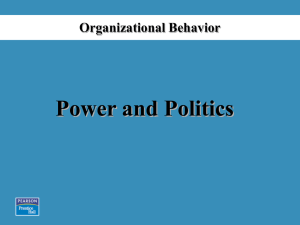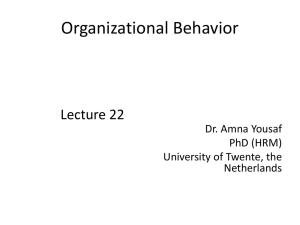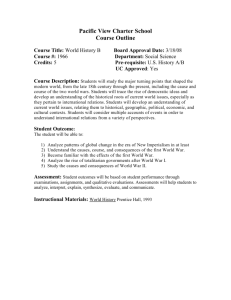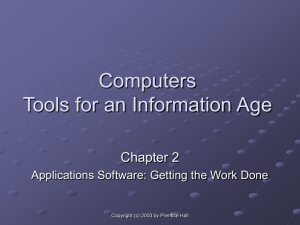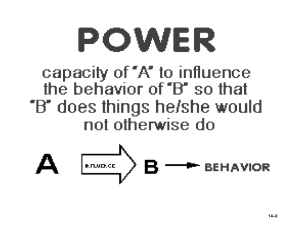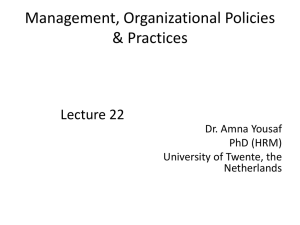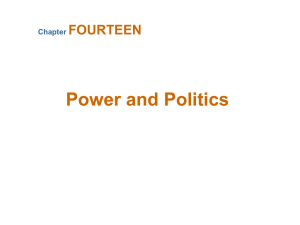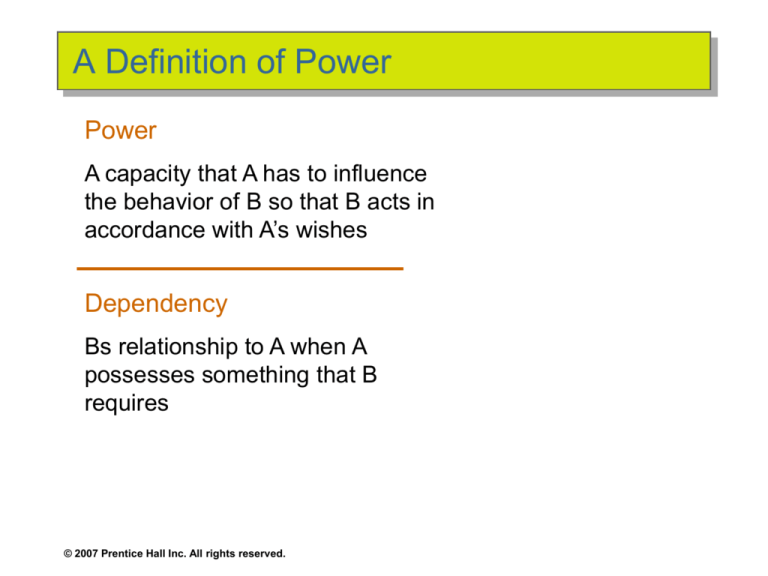
A Definition of Power
Power
A capacity that A has to influence
the behavior of B so that B acts in
accordance with A’s wishes
Dependency
Bs relationship to A when A
possesses something that B
requires
© 2007 Prentice Hall Inc. All rights reserved.
Contrasting Leadership and Power
Leadership
– Focuses on goal
achievement
– Requires goal
compatibility with
followers
– Focuses influence
downward
Research Focus
– Leadership styles
and relationships with
followers
© 2007 Prentice Hall Inc. All rights reserved.
Power
– Used as a means for
achieving goals
– Requires follower
dependency
– Used to gain lateral
and upward influence
Research Focus
– Power tactics for
gaining compliance
Bases of Power: Formal Power
Formal Power
Is established by an individual’s position in an
organization; conveys the ability to coerce or reward,
from formal authority, or from control of information
Coercive Power
A power base dependent on fear
Reward Power
Compliance achieved based on
the ability to distribute rewards that
others view as valuable
© 2007 Prentice Hall Inc. All rights reserved.
Bases of Power: Formal Power (cont’d)
Legitimate Power
The power a person receives as a result of
his or her position in the formal hierarchy of
an organization
© 2007 Prentice Hall Inc. All rights reserved.
Bases of Power: Personal Power
Expert Power
Influence based on special skills
or knowledge
Referent Power
Influence based on possession
by an individual of desirable
resources or personal traits
© 2007 Prentice Hall Inc. All rights reserved.
Social Influence Tactics I
Rational Persuasion: Using logical arguments and
facts to persuade another that a desired result will
occur.
Inspirational Appeal: Arousing enthusiasm by
appealing to one’s values and beliefs.
Consultation: Asking for participation in decision
making or planning a change.
Ingratiation: Getting someone to do what you want
by putting that person in a good mood or getting him
or her to like you.
Exchange: Promising some benefits in exchange for
complying with a request.
© Copyright 2003, Prentice Hall
5
Social Influence Tactics II
Personal Appeal: Appealing to feelings of loyalty and
friendship before making a request.
Coalition Building: Persuading by seeking the
assistance of others or by noting the support of
others.
Legitimating: Pointing out one’s authority to make a
request or verifying that it is consistent with prevailing
organizational policies and practices.
Pressure: Seeking compliance by using demands,
threats, or intimidation.
© Copyright 2003, Prentice Hall
6
Dependency: The Key To Power
The General Dependency Postulate
– The greater Bs dependency on A, the greater the
power A has over B
– Possession/control of scarce organizational resources
that others need makes a manager powerful
– Access to optional resources (e.g., multiple suppliers)
reduces the resource holder’s power
What Creates Dependency
– Importance of the resource to the organization
– Scarcity of the resource
– Nonsubstitutability of the resource
© 2007 Prentice Hall Inc. All rights reserved.
Power Tactics
Power Tactics
Influence Tactics
Ways in which individuals
translate power bases into
specific actions
• Legitimacy
• Rational persuasion
• Inspirational appeals
• Consultation
• Exchange
• Personal appeals
• Ingratiation
• Pressure
• Coalitions
© 2007 Prentice Hall Inc. All rights reserved.
Preferred Power Tactics by Influence Direction
Upward Influence Downward Influence
Lateral Influence
Rational persuasion
Rational persuasion
Rational persuasion
Inspirational appeals
Consultation
Pressure
Ingratiation
Consultation
Exchange
Ingratiation
Legitimacy
Exchange
Personal appeals
Legitimacy
Coalitions
E X H I B I T 14–2
© 2007 Prentice Hall Inc. All rights reserved.
Power in Groups: Coalitions
Coalitions
Clusters of individuals who
temporarily come together
to achieve a specific
purpose
• Seek to maximize their size
to attain influence
• Seek a broad and diverse
constituency for support of
their objectives
• Occur more frequently in
organizations with high
task and resource interdependencies
• Occur more frequently if
tasks are standardized and
routine
© 2007 Prentice Hall Inc. All rights reserved.
Politics: Power in Action
Political Behavior
Activities that are not required as part of one’s formal
role in the organization, but that influence, or attempt
to influence, the distribution of advantages or
disadvantages within the organization
Legitimate Political Behavior
Normal everyday politics
Illegitimate Political Behavior
Extreme political behavior that violates the implied rules
of the game
© 2007 Prentice Hall Inc. All rights reserved.
Politics Is in the Eye of the Beholder
“Political” Label
“Effective Management” Label
1. Blaming others
vs.
Fixing responsibility
2. “Kissing up”
vs.
Developing working relationships
3. Apple polishing
vs.
Demonstrating loyalty
4. Passing the buck
vs.
Delegating authority
5. Covering your rear
vs.
Documenting decisions
6. Creating conflict
vs.
Encouraging change and innovation
7. Forming coalitions
vs.
Facilitating teamwork
8. Whistle blowing
vs.
Improving efficiency
9. Scheming
vs.
Planning ahead
10. Overachieving
vs.
Competent and capable
11. Ambitious
vs.
Career-minded
12. Opportunistic
vs.
Astute
13. Cunning
vs.
Practical-minded
14. Arrogant
vs.
Confident
15. Perfectionist
vs.
Attentive to detail
© 2007 Prentice Hall Inc. All rights reserved.
Source: Based on T. C. Krell, M. E.
Mendenhall, and J. Sendry, “Doing
Research in the Conceptual Morass
of Organizational Politics,” paper
presented at the Western Academy of
Management Conference, Hollywood,
CA, April 1987.
E X H I B I T 13–3
Factors that Influence Political Behaviors
E X H I B I T 14-4
© 2007 Prentice Hall Inc. All rights reserved.
Employee Responses to Organizational Politics
E X H I B I T 14-5
© 2007 Prentice Hall Inc. All rights reserved.
Defensive Behaviors
Avoiding Action
• Overconforming
• Buck passing
Avoiding Blame
• Playing dumb
• Buffing
• Stretching
• Playing safe
• Stalling
• Justifying
Avoiding Change
• Prevention
• Self-protection
• Scapegoating
• Misrepresenting
E X H I B I T 14–6
© 2007 Prentice Hall Inc. All rights reserved.


